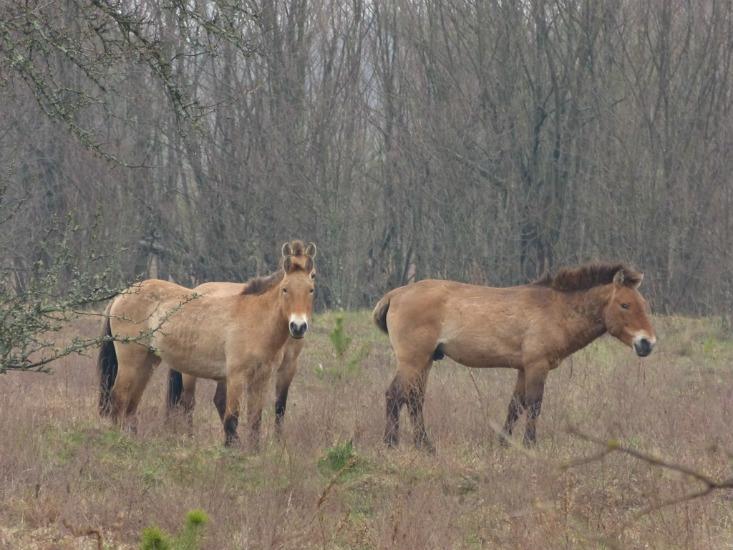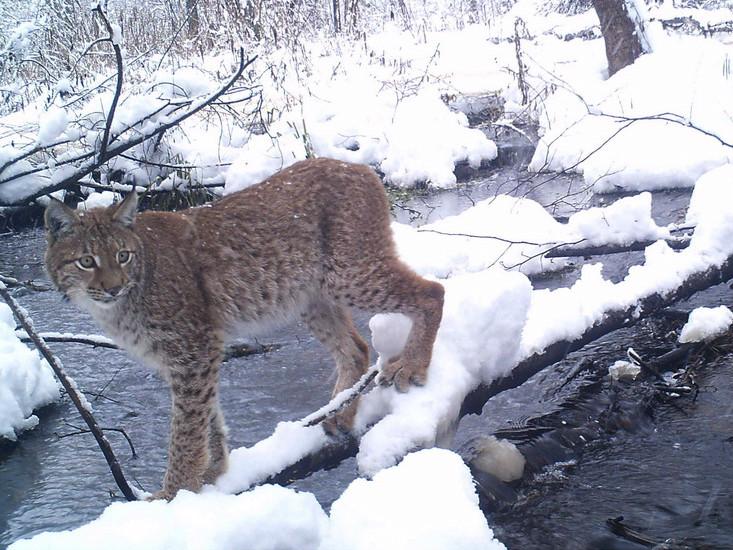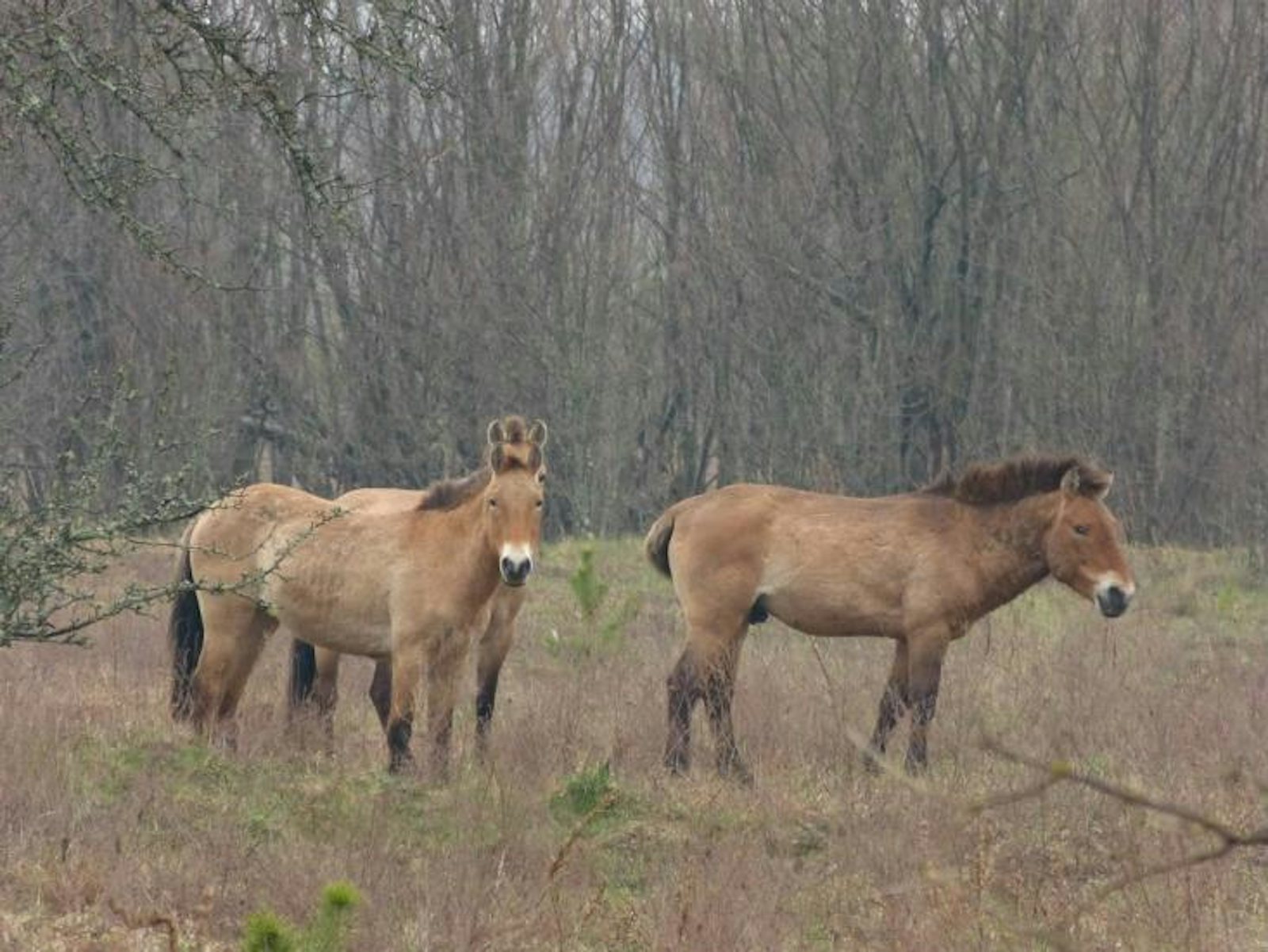
After a fatal series of errors and malfunctions in the early morning of April 26, 1986, the core of the Chernobyl nuclear facility melted down and then exploded, killing 31 workers at the plant. The accident spewed massive amounts of radioactive material into the surrounding area, forcing a mass evacuation of the nearby villages. Many wild animals died from the direct toxicity of the radiation and almost 1,000 acres of the Red Forest—named for the unusual color its trees turned after the disaster—died within months. The most radioactive human settlements were bulldozed and buried. (See the related story about the most radioactive part of the nuclear plant: “Chernobyl’s Hot Mess, ‘the Elephant’s Foot,’ Is Still Lethal.”)
Checkpoints and fences were quickly put up around the vast contaminated region, stretching between northern Ukraine and southern Belarus. This became the exclusion zone, a region that has remained closed to most human activity for the past 28 years.
Yet the area is far from a barren wasteland. Instead it is a patchwork of “hot zones” of high radiation next to “clean” areas. Many of the most radioactive isotopes have decayed or washed out of the region in rain. Birds, rodents, elk, lynxes, wolves, wild boar, and deer have all been spotted living within the borders of the zone. A herd of 21 rare Przewalski’s horses that had escaped from the quarantined area were found to be living in the region. By early 2005, the herd had grown to 64.
Many of these Chernobyl animals have been found to have high levels of radiation in their bodies, but none of them appear to have mutated into monsters with abnormal numbers of heads (although in the early years, researchers did find plants and mushrooms that were severely mutated, gigantic, malformed, or even glowing). Does the absence of obvious deformities mean that the animals are thriving? Might the habitats around Chernobyl actually be better off after the disaster?
“It can be said that the world’s worst nuclear power plant disaster is not as destructive to wildlife populations as are normal human activities.”
Though substantial doses of radiation would not be expected to help wildlife, the accident also had another profound effect: It pushed out the people living nearby. Prior to 1986, few animals were able to inhabit the region around the power plant because Soviet dairy farms and pine plantations had impinged heavily on their habitats. “This region was affected by people over a number of centuries,” explains Sergey Gaschak, a researcher at the Chernobyl Center in Ukraine, who has been photographing wildlife in exclusion zone since the early 2000s. “It was very transformed by irrigation, artificial forests, arable lands, infrastructure, [and] garbage.” In the years following the accident, it appears that animals reclaimed the land, and were spotted regularly by researchers working in the area. “Definitely the wildlife are happy in the absence of humans,” says Gaschak, “[And] externally, the animals appear normal.” His photographs have documented a great number of large mammals such as lynxes and wolves. Because wolves are at the top of the food chain, they are usually regarded as positive signs of the overall health of the ecosystem.
Some scientists, including Texas Tech University professor Robert Baker, say that removing the human populations has had the unintentional effect of creating a wildlife reserve. “It cannot be said that radiation is good for wildlife,” Baker writes on his research website. “[But] it can be said that the world’s worst nuclear power plant disaster is not as destructive to wildlife populations as are normal human activities.”

But some researchers disagree, arguing that the evidence that wildlife is thriving is merely anecdotal. Other studies have shown that animals and the ecosystem continue to be affected by the radiation.
According to a study published earlier this year, trees in the Red Forest appear to not be decaying at a normal rate. Dead leaves continue to litter the forest floor, being two to three times thicker in the “hottest” areas. The study’s findings suggest that the decomposers—the microbes, fungi, and insects that drive the process of decay—have been harmed by the radiation, allowing dead trees and leaves to pile up.
A 2013 study from some of the same scientists found lower populations of bumblebees, spiders, dragonflies, butterflies, and birds in areas with higher radioactive readings. The two lead researchers, Timothy Mousseau and his Anders Moller, have found a strong correlation between highly contaminated areas and physical changes in barn swallows. The changes included partial albinism, deformed beaks, cataracts, tumors, smaller brain sizes, and malformed, asymmetrical tails. All of these changes would make the birds less successful at catching food, migrating, and breeding.
Mousseau’s research also found that birds that migrate great distances were particularly harmed by radiation. He says this is likely because migration is metabolically very demanding. Metabolic activities can release a lot of mutagens that, combined with radiation, become “a double whammy for these migratory species [making them] more susceptible to the effects of the ionizing radiation,” he explains.
But Mousseau also recently found that some birds appear to have developed the ability to adapt to their radioactive environment better than others. After taking blood and feather samples from 152 birds from 16 different species at eight sites, they found that birds with a certain type of pigment in their feathers (pheomelanin) were in poorer health. This was because the production of pheomelanin was using up many of the antioxidants in the birds’ bodies. Usually antioxidants help protect animals from dangerous free radicals caused by radiation. But if the antioxidant levels are too low, free radicals can cause genetic damage and oxidative stress, when they overwhelm the body’s defenses. Mousseau found that the two species of birds that used pheomelanin to produce a lot of pink pigment failed to adapt to their Chernobyl home. The other species didn’t use up their antioxidants making melanin; they could fight off the stress of radiation and were in better health.
Fish also appear to be surviving quite well in the zone. Jim Smith, a professor of environmental science at Portsmouth University, has conducted studies on the contamination of fish around Chernobyl. “We don’t see obviously deformed fish at Chernobyl,” he says. “Potentially, there may have been [some] due to very high dose rates [of radiation] shortly after the accident, but dose rates dropped about 100-fold in the first few years after the accident. I think it’s likely that dose rates currently just aren’t high enough to cause a significant number of deformities.” He adds that it is also likely that the populations are resilient because mutated fish don’t survive to adulthood.
While scientists don’t agree on whether Chernobyl deserves its unofficial title of “wildlife refuge,” the research shows that different species react differently to chronic exposure to radiation. For at least some of them, it’s worth bearing a few extra mutations to once again have access to a land untrammeled by humans.
Simone M. Scully is a science and culture journalist based in New York City. Follow her on Twitter at @ScullySimone.






























